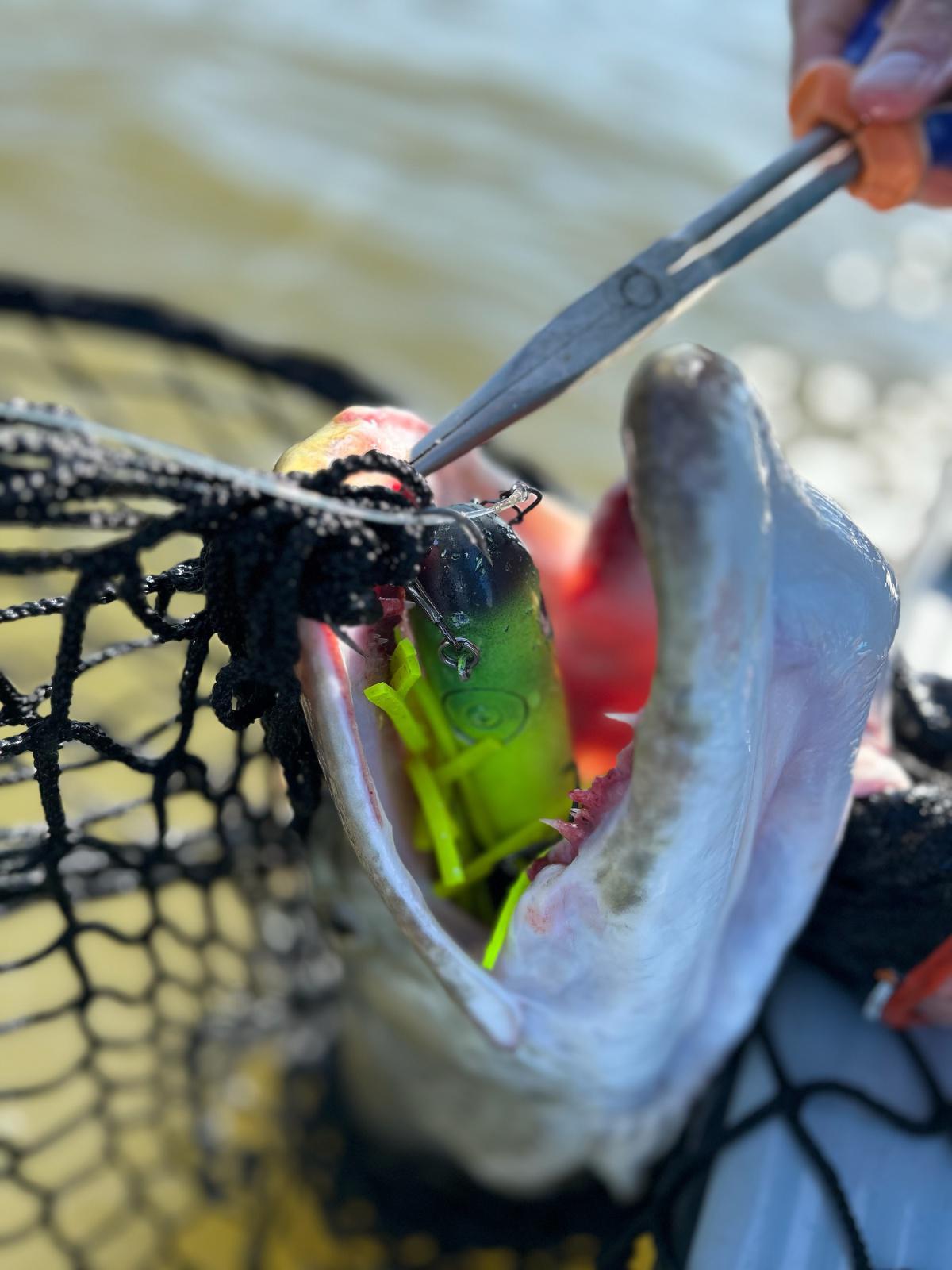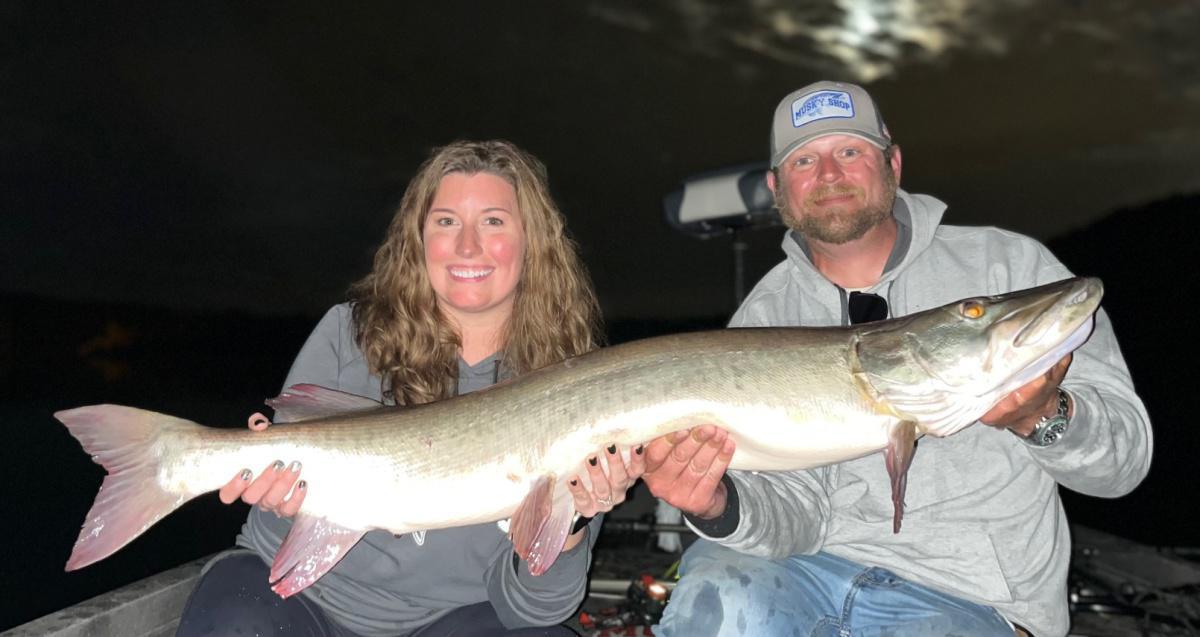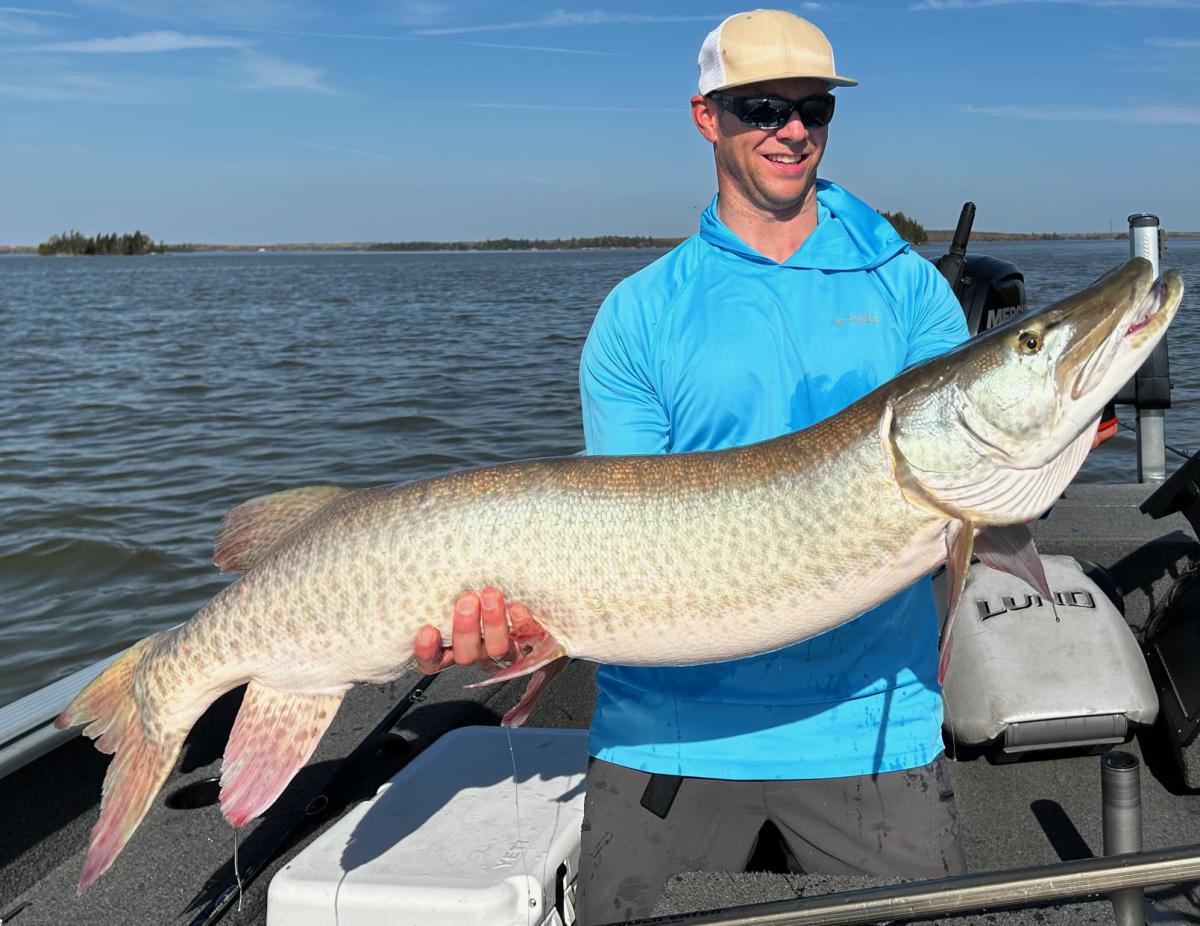I am proud to announce the release of my new lure, the Kraken from Livingston Lures. After the incredible successes of both, the Titan and Titan Junior, the fine folks at Livingston Lures green-lit my third production lure: Kraken. While the Titan and Titan Junior feature some external and internal design elements that are well past complicated from a manufacturing standpoint, the Kraken makes both of the aforementioned lures seem simple. With this in mind, I have to thank the manufacturing specialists at Livingston Lures while simultaneously apologizing for the number of headaches my crazy lure designs have surely brought on. But nothing good is ever easy and the results speak for themselves, a highly complex design that produces a simplified fishing experience.
The Kraken is the easiest and most effective musky jerk bait for anglers of all skill levels. Anglers can simply turn their reel handle in short bursts and the Kraken will seemingly dance up and down in the water column erratically advancing. More experienced anglers utilizing the Kraken in a traditional sweep/pull or upward popping motion will discover instantly that the Kraken takes far less physical exertion to achieve dialed-in retrieves. The more efficient transfer of force from the rod tip to the lure means the Kraken is a jerk bait you can throw from sun up to sun down without risk of body fatigue.
Like all anglers when a new musky lure hits the market there are a few things I want to know before I add it to my musky tackle arsenal. Where, when, and how should I apply it during my time on the water? In regards to the above questions, the answer is rather simple when it comes to the Kraken—anywhere, anytime, and in any way. I know that’s a bold statement but the Kraken is the most versatile musky lure ever created and I’ll tell you why.
The Kraken features a modular weighting system not unlike that of the Titan. The Kraken comes standard with a 28-gram insert weight. With the stock weighting, the Kraken will easily run six to ten feet utilizing a moderate upwards popping retrieve. But when applying a quick side sweep the Kraken will comfortably run in the three-to-four-foot zone of the water column. By simply changing the angles at which force is applied the Kraken’s running depth options can be altered.
The Kraken can be useful in very shallow water where other jerk baits don’t apply. By removing the stock weight from the lure, the Kraken will operate in mere inches of water. This is deadly for coaxing muskies from dense vegetation where other jerk baits might foul. This unweighted option creates a slow fall with hyper-extended hang time between sweeps and pops of the rod making it deadly when dealing with negative and neutral muskies.
As mentioned, the Kraken has a weight system based on the Titan's design. This cohesive design element was significant to me as it allows anglers to utilize weights from their existing Titans or matching weighting kits with options of 7, 14, 21, and 28 grams. These weights are also stackable creating seemingly endless configurations. The previously mentioned shallow applications become even more dialed in with the addition of the 7-gram weight as the lure has a slightly faster fall rate. Alternative options for stacked weighting will create a super deep running configuration of the Kraken.
I would be remiss if I didn’t touch on the possible weight modifications that can be made to stock Krakens. When the internal weight is removed from the lure’s belly it allows open access to an internal chamber allowing for non-traditional modifications to its weight; such as the addition of BBs, lead split-shots, or anything else you can dream up. With so many weighting options, the applications of the Kraken are endless. I would also note that changing the weighting of the Kraken takes mere seconds and a simple Philips head screwdriver.
To answer the “when?” to utilize a Kraken: anytime. Muskies seem to gravitate to jerk bait presentations in the early season and even just post-spawn. It is a common take that jerk baits excel in the summer, winter, and fall throughout the musky’s habitat range. Again, this is where the versatility of the Kraken shines as it allows anglers to quickly and easily tailor their Kraken for any season via weighting options. Ripping and popping over shallow flats in the early season and delving down to the bottom structural edges just before ice up can all be achieved with a single lure.
The Kraken's design complexity resulted in a lure that is easy to use in just about any manner imaginable. Honestly, I could guarantee the Kraken’s success after witnessing inexperienced guide clients and even children land muskies during the prototyping stage. This was represented in an episode of Musky Shop TV when a first-time musky angler was able to land a monster after making just a few casts with the Kraken. Regardless of how you work the Kraken, it always has a strike-enticing look. Long sweeps, jerks, pulls, taps, upwards rips, reel stops, and even a slow straight retrieve can be used. It should also be mentioned that the Kraken can be used as a vertical jig with additional weight added further reinforcing the versatility of the Kraken.
Now let's talk tails, Kraken features a replaceable tail that allows for the mixing and matching of replacement tails and bodies. Currently, there are 8 standard Kraken body colors and 10 replacement tail colors. This means 80 color variations can be achieved by mixing and matching tails. An all-black Kraken can be transformed into a black/orange or a black/white color pattern in under a minute. Tail changes are easy, allowing you to focus your energy on fishing.
Kraken tails are notably durable. In most instances, you can expect a skirt to be in great shape after landing multiple muskies and pike. When replacing skirts, it’s important to remember a dab of gel superglue on both the top and bottom of the skirt seat. This gel superglue ensures that the skirt will stay in place even if a pesky pike is nipping. When removing a Kraken skirt just flip the lure upside down and work your finger gently around the inside to free the existing glue. This allows you to save the skirt for later usage.
Falling even further into the abyss of options musky anglers have with the Kraken, upgraded rear hooks dressed with blades are also available [trailers]. Myself and Steve Herbeck have had tremendous success with Williow Leaf and Colorado blades attached to the rear hook of the Kraken. This gives the lure a larger, flashier profile. The results in Canada this summer and fall were astounding with multiple muskies over fifty inches and a couple of fifty-four-inch monsters on the line. Using the rear-bladed Kraken hook is simple. Carefully remove the Krakens rear hook heat shrink and replace the existing hook with a split-ringed trailer.
While the addition of a rear blade will increase the overall profile of the Kraken a few anglers have inquired regarding a smaller profile. This is something I considered during the design phase and a smaller profile can be achieved with an easy trick. By simply trimming back the skirt of the Kraken with scissors you can tailor its profile. I have had great results with a “downsized” Kraken with about two inches trimmed off the bottom. In more than one instance I have converted followers to strikes by using the same color combo Kraken in a trimmed-down fashion.
A Kraken design note for anglers: Kraken intentionally takes water in two places, the rear section and just under the weight cavity. These areas fill with water to give the Kraken some elements of neutral buoyancy. So don’t be shocked if water comes out of your lure—it’s supposed to do that. Also of note, the stock hooking configuration of the Kraken is excellent straight out of the pack; however, larger hooks can be added to the lure with zero negative impact on its action. I use a short shank 7/0 on the nose of my Krakens and a 7/0 on the rear while leaving the stock middle position hook in place. Regardless of what hooking configuration you choose to use the Kraken can handle it, just be sure to use hooks that are on the shorter side and won’t tangle and foul during casts or retrieve.
While I could write for days regarding the Kraken, I think I’ve covered many of its finer points, and I assure you future articles and videos about the Kraken are forthcoming. I will leave you with this: during the developmental and design stages of the Kraken, only three anglers were testing the Kraken. Myself, Steve Herbeck, and my good friend Tim. Part of this was about keeping the “cat in the bag” but a larger component was my explicit trust of both anglers’ opinions. While I nervously awaited their feedback, I was understandably concerned with what that feedback might be. Did it outright suck? Had I missed the mark? Well, the first of these two knuckleheads to pick up the phone with some feedback was Steve Herbeck. While I find Steve endearing, he is also as blunt as can be, so I braced for harsh words. Before I could get a word in, Steve was blaring at me in rapid-fire about how he needed more Krakens. I breathed a sigh of relief and he subsequently regaled me with his amazing on-the-water results. The Kraken was producing monster-sized Eagle Lake muskies when nothing else would even get a follow.
The feedback I received from Tim was also glowing and yielded insane results as he had landed his personal best musky. Tim’s fish is featured in the release video for Kraken and is simply a monster Canadian musky. Needless to say, the on-the-water results in the early stages of Kraken were simply amazing and I am confident enough to say if you add the Kraken to your musky arsenal, you will have some amazing musky stories of your own to share.






